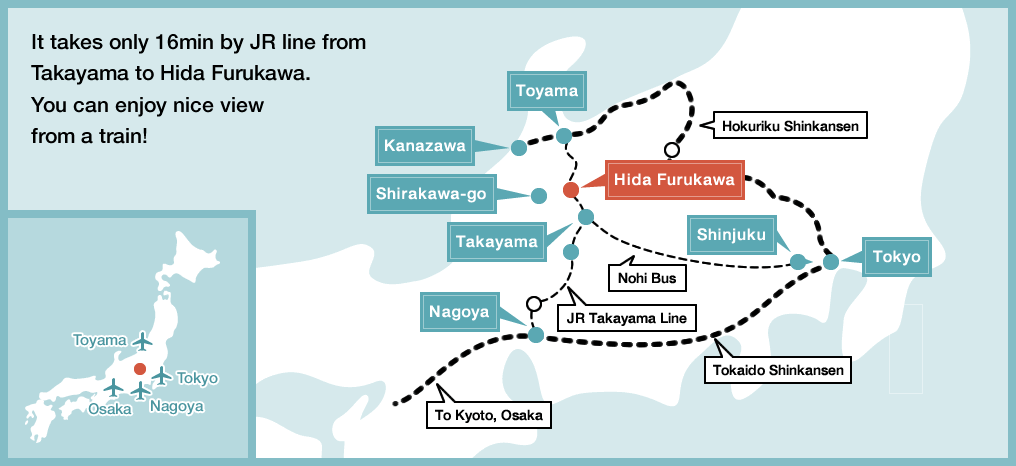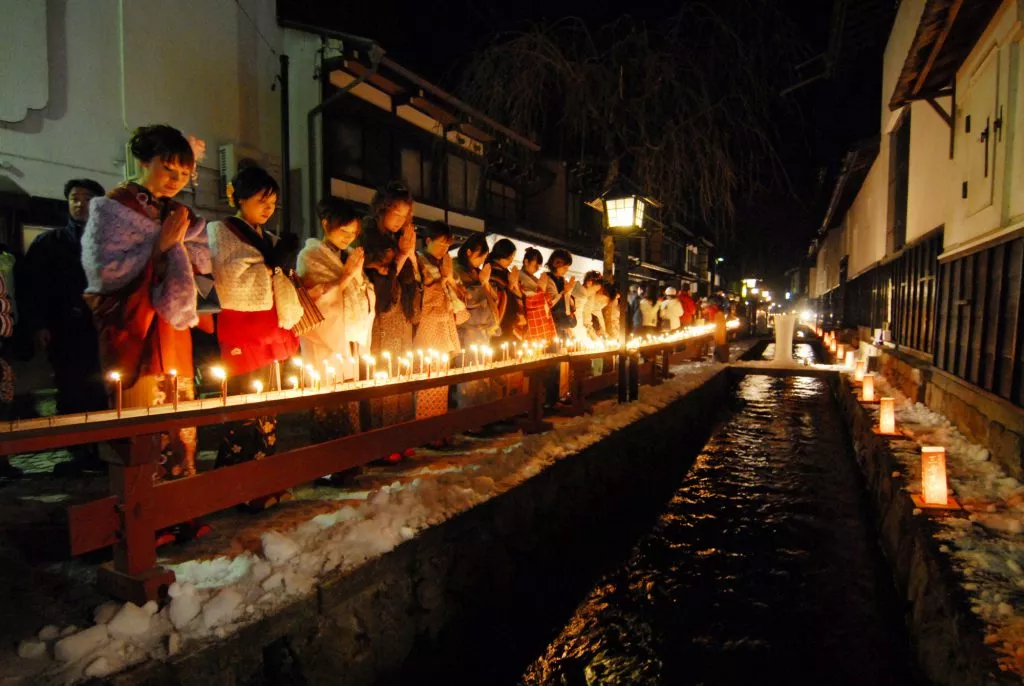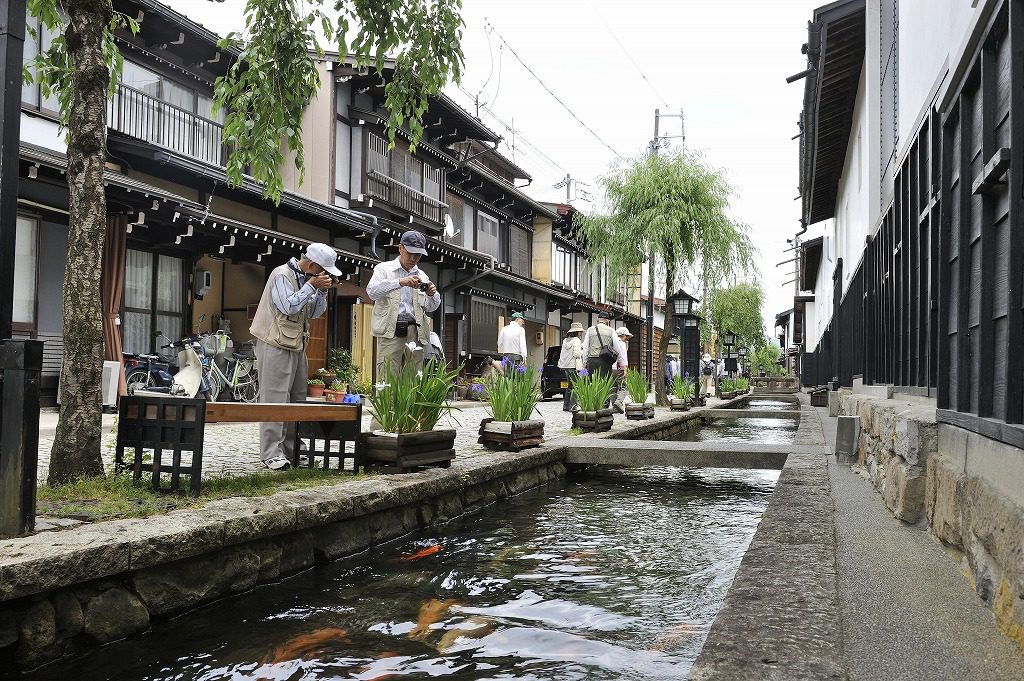Sitting on the northern portion of the Hida plateau in Gifu Prefecture, Hida is a small city less than 800 square kilometres in area. It is home to dense forests, two rivers – the Miya River on its western side and the Takahara River on the east – and surrounded by mountains that are as much as 300 metres high. It is an amazing city to squeeze into your itinerary if doing the popular Kanazawa-Shirakawago-Takayama route.
How to get to Hida
My travel to Hida was fully covered by my Japan Rail Pass. From Kanazawa Station, I took a Shinkansen to Toyama Station and then transferred to a Ltd Exp (Wide View) Hida train going to Hida-Furukawa Station. The trip took about an hour and forty-five minutes.
If you are coming from Takayama Station, the train journey only takes about 15 minutes via the JR Takayama Line or the Ltd Exp (Wide View) Hida line, both of which are also covered by the JR Pass.

Hida City All Rights Reserved
Getting around Hida
Hida is not a very big city. Its main tourist attractions are found in and around its town centre, which is about a 10-minute walk from Hida-Furukawa Station, so exploring on foot is the way to go.

Hida City All Rights Reserved
What to see
Takumikan Craft Museum
Because of the thriving forests in this region, Hida, as well as many other adjacent towns and cities, have long been known for high quality lumber. For many centuries, locals in this part of Gifu Prefecture have dedicated their lives to woodworking and craftsmanship, creating a wide variety of wooden products and developing carpentry styles and methods that do not make use of nails.
The Takumikan Craft Museum, which is a 10-minute walk from Hida-Furukawa Station, features several displays of traditional tools and equipment used in carpentry, as well as an interactive corner where you can try solving games and puzzles created from wood. Entrance costs 300 yen.
Furukawa Festival Hall
Because I was there in December, I was not able to witness the city’s most important festival, the Furukawa Festival. Held every year on 19-20 April, it involves an okoshidaiko, which is a large type of drum, being paraded around town by a group of men; and several lavishly decorated floats that are displayed on the streets.
As an alternative, I checked out the Furukawa Festival Hall, a place where the festival floats that were used during the actual event are kept during the rest of the year. For a price of 800 yen, you can also enjoy a movie in the museum’s 3D theatre and a karakuri puppet show.
Old Town Canal Area
Hida’s old town has a small canal area (called Seto River) that serves as home to numerous carp for most of the year. On both sides of it are well-preserved traditional white-walled store houses known as shirakaba dozo. Located nearby are the Takumikan Craft Museum, Furukawa Festival Hall, and a couple of small temples.

Hida City All Rights Reserved
Hida City Landmarks Used in the Movie “Kimi No Na Wa”
Tourism in Hida has become more marked in the last year, thanks to Makoto Shinkai’s latest film, “Kimi No Na Wa”. Some of the places used in the hit movie are based on real-life locations found in Hida. If you have already seen the movie, the following are a couple of easily recognisable places: (1) the train station where one of the main characters and his friends alight to find a town called Itomori, is actually the Hida-Furukawa Station; and (2) the library where they go to do some research is the Hida City Library.


















